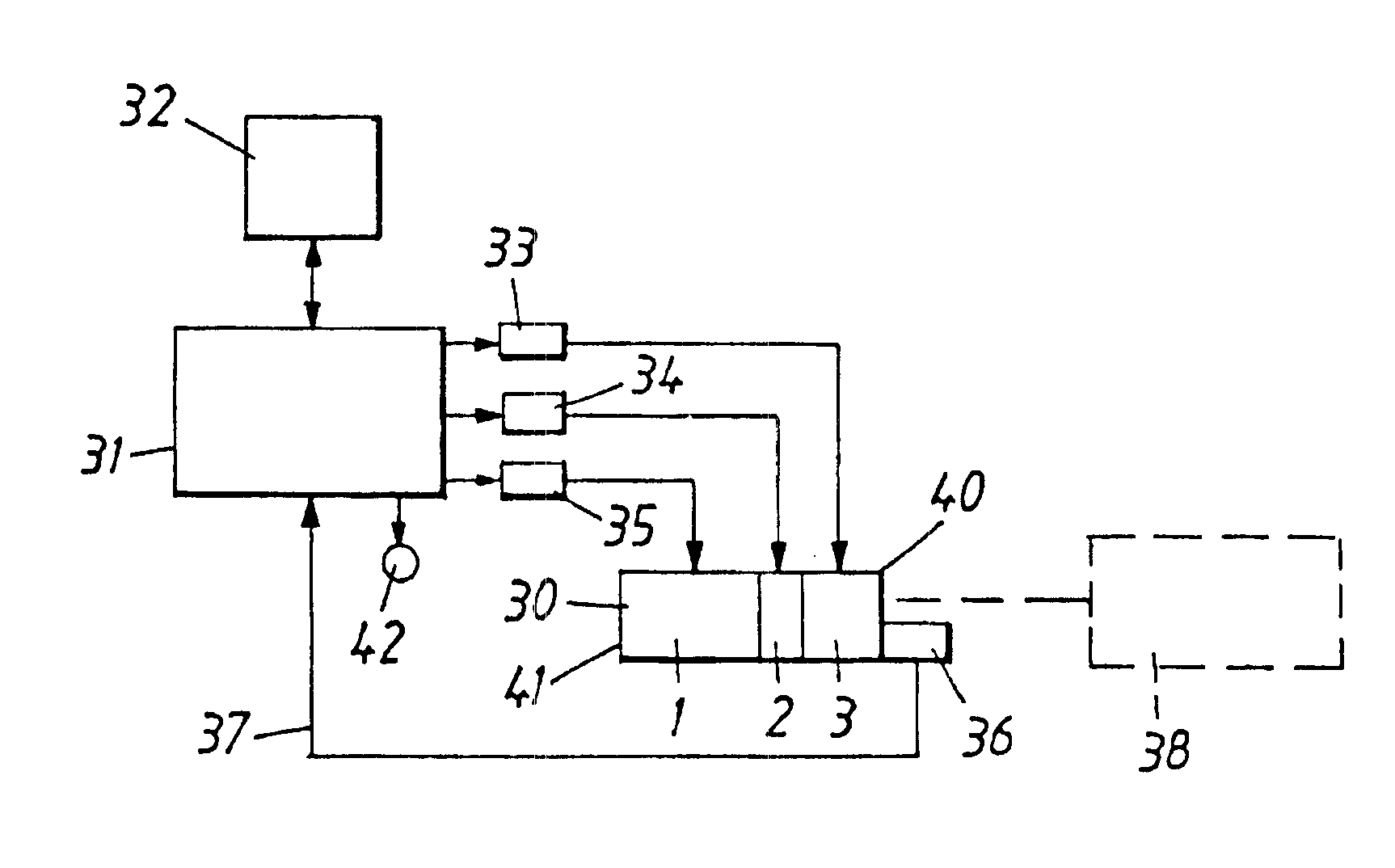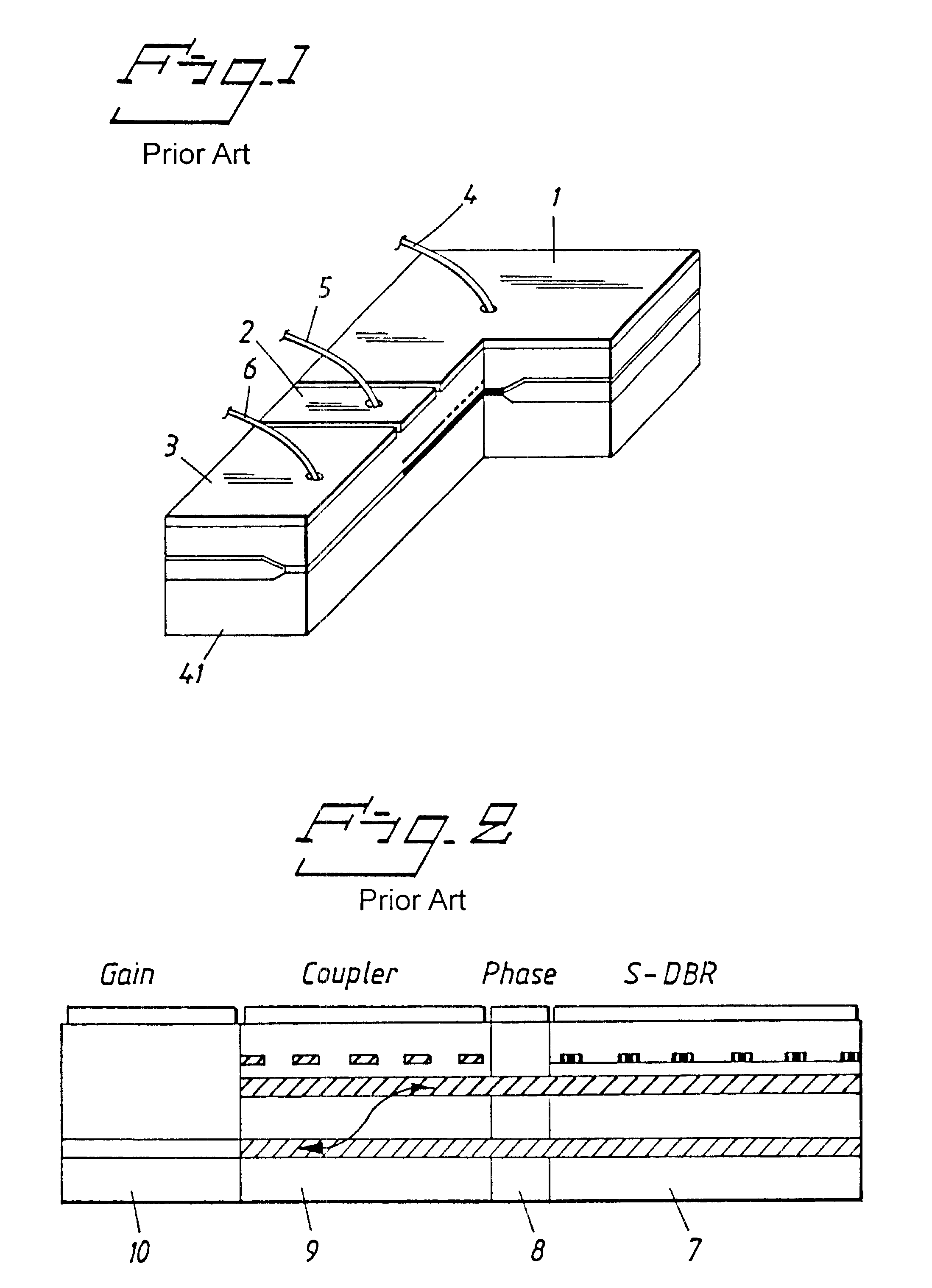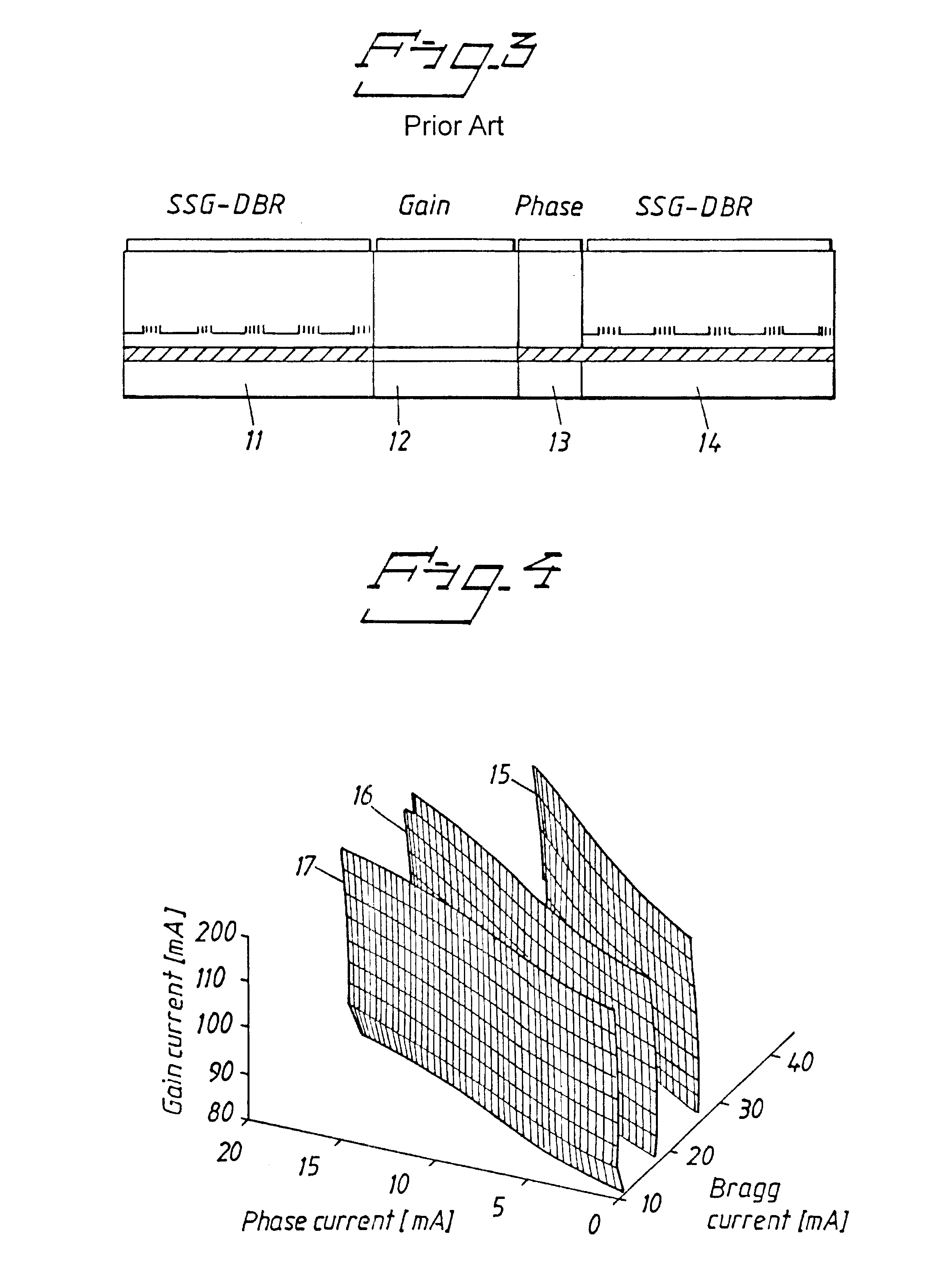Method and apparatus for optimizing operation points of a tunable laser
a laser and operation point technology, applied in the direction of laser details, laser output parameters control, semiconductor lasers, etc., can solve the problems of large quantities of unnecessary data, decisive drawbacks of processes, and high time-consuming measuring processes
- Summary
- Abstract
- Description
- Claims
- Application Information
AI Technical Summary
Problems solved by technology
Method used
Image
Examples
first embodiment
There has been described in the aforegoing a first embodiment where the sensing device includes a monitor detector.
second embodiment
According to the invention, the sensing device includes, instead, a sensing circuit which is adapted to detect the voltage that prevails across the different laser sections when different amounts of current are injected into said sections 1, 2, 3. The detection circuit is firmly connected to the laser and is caused to measure the voltage across the various laser sections 1, 2, 3 for different combinations of laser section control. Signals delivered by the detection circuit at different control combinations are sent to the control unit 31.
When the laser is controlled with current and the laser goes through a mode jump, a discontinuity will occur in the voltage across one or more of the laser sections.
third embodiment
According to the invention, said sensing device includes a sensing circuit which is adapted to detect the current that flows through the different laser sections when a voltage is applied to said sections 1, 2, 3. The detection circuit is firmly connected to the laser and is caused to measure the current that passes through the various laser sections 1, 2, 3 with different combinations of voltage control across said sections. Signals delivered by the detection circuit in response to different control combinations are sent to the control unit 31.
It appears that when the laser is controlled with voltage and the laser goes through a mode jump, a discontinuity will occur in the current that flows through one or more of the laser sections.
The circuit for detecting the voltage across the laser sections, or the current that passes therethrough, can be integrated in a known manner in the drive circuits 33-35 exemplified above as current generators. Alternatively, the detection circuits may ...
PUM
 Login to View More
Login to View More Abstract
Description
Claims
Application Information
 Login to View More
Login to View More - R&D
- Intellectual Property
- Life Sciences
- Materials
- Tech Scout
- Unparalleled Data Quality
- Higher Quality Content
- 60% Fewer Hallucinations
Browse by: Latest US Patents, China's latest patents, Technical Efficacy Thesaurus, Application Domain, Technology Topic, Popular Technical Reports.
© 2025 PatSnap. All rights reserved.Legal|Privacy policy|Modern Slavery Act Transparency Statement|Sitemap|About US| Contact US: help@patsnap.com



